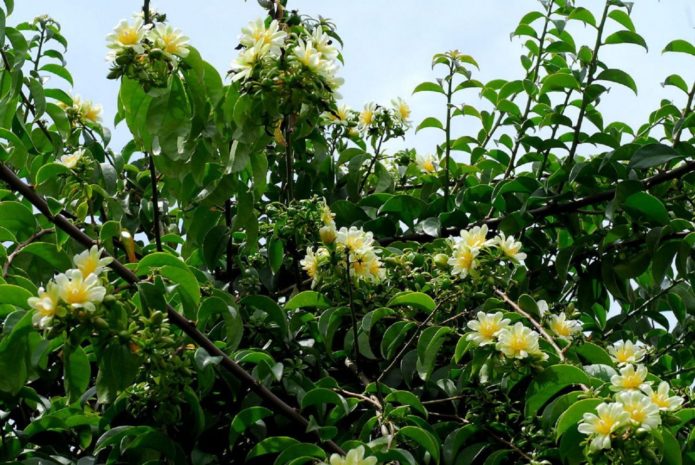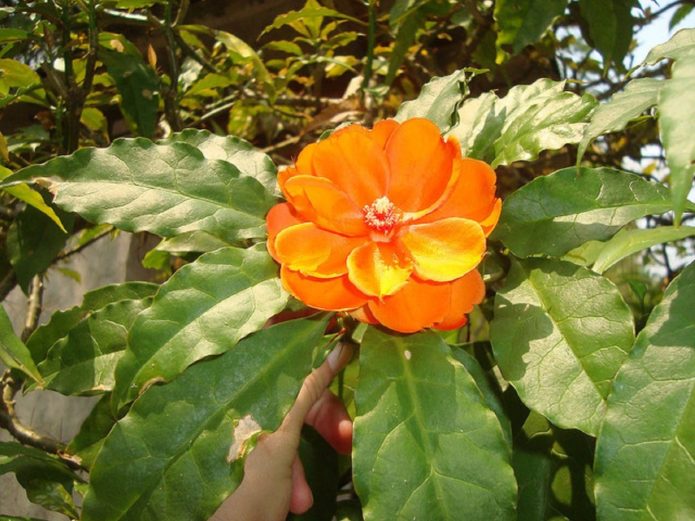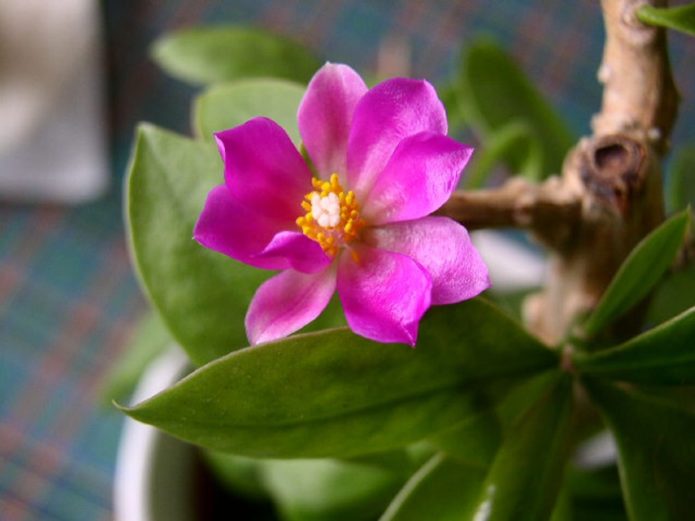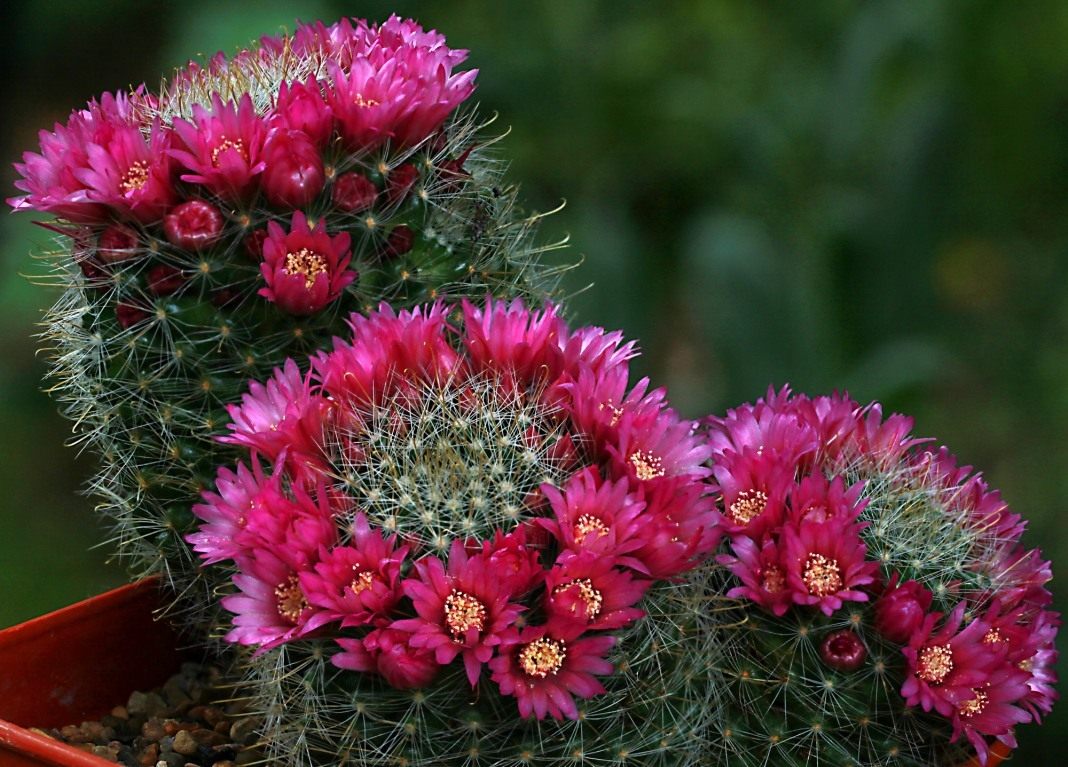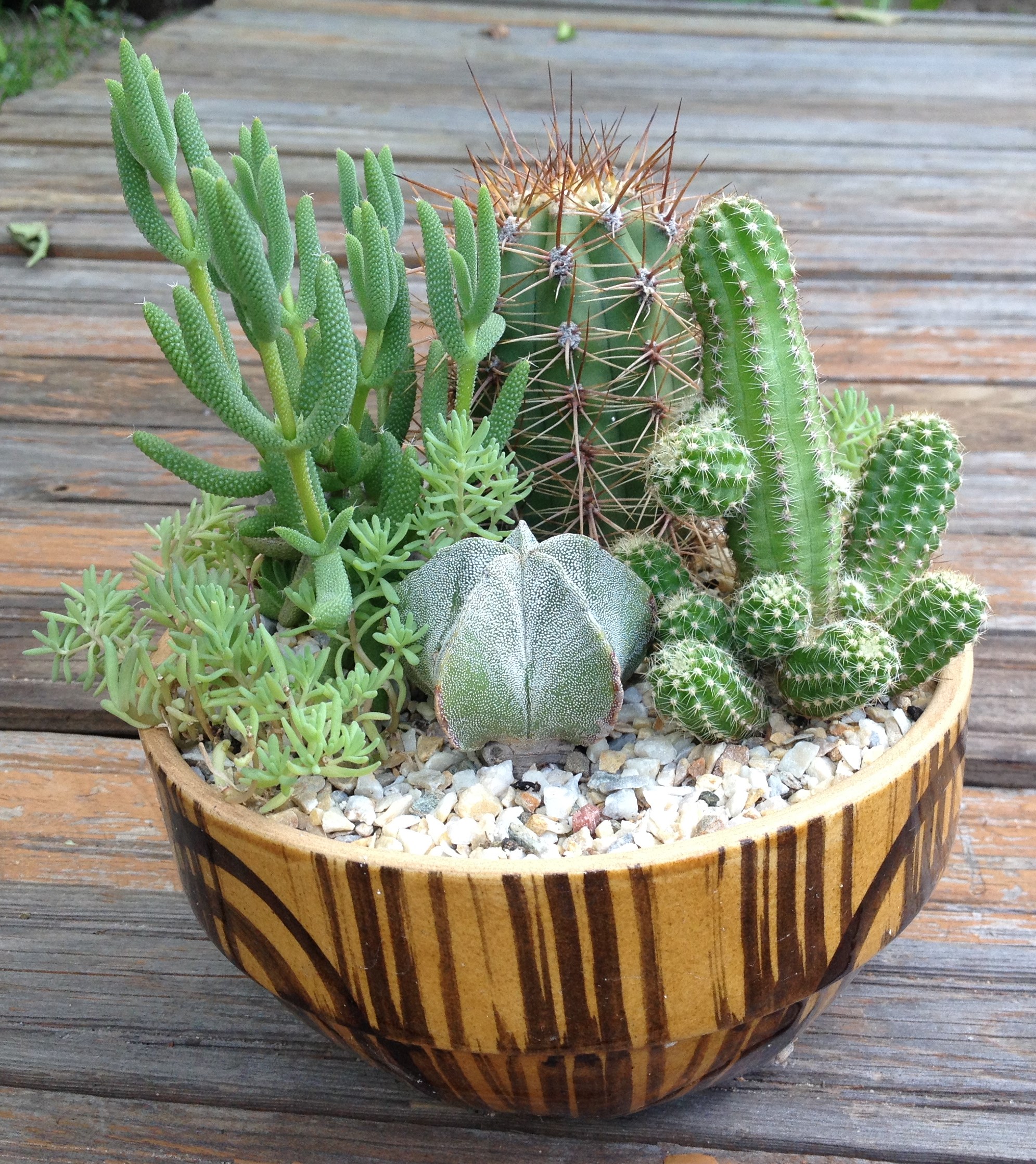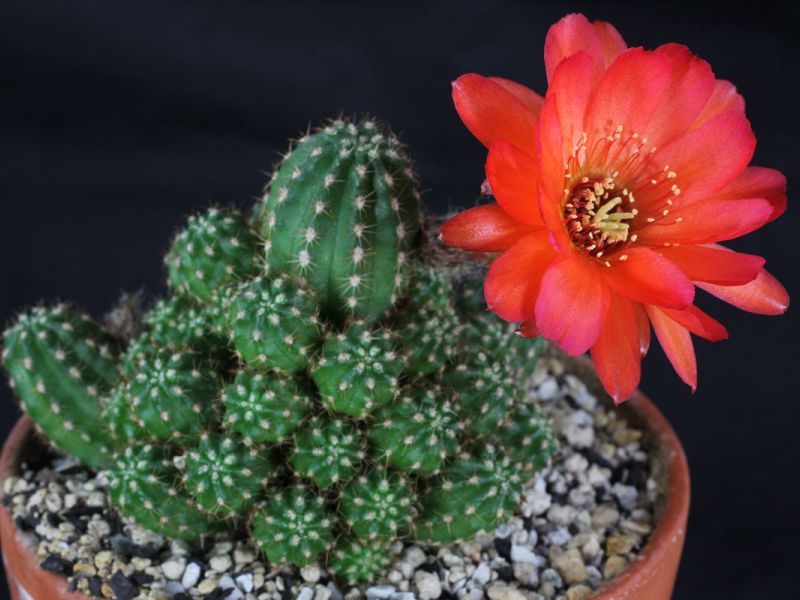Despite the fact that pereskia belongs to the Cactus family, it is very different from the usual cacti with needles. The trunk of the plant is densely covered with leaves and flowers. In the interior, such a green friend looks very original, therefore it is popular with flora lovers.
Content
Pereskia: what is it?
The birthplace of this unusual cactus is South America. It belongs to the most ancient plants in the world and is represented by large bushes or small trees. If you look more closely, you can see long black spines between the leaves.
Plant in the wild
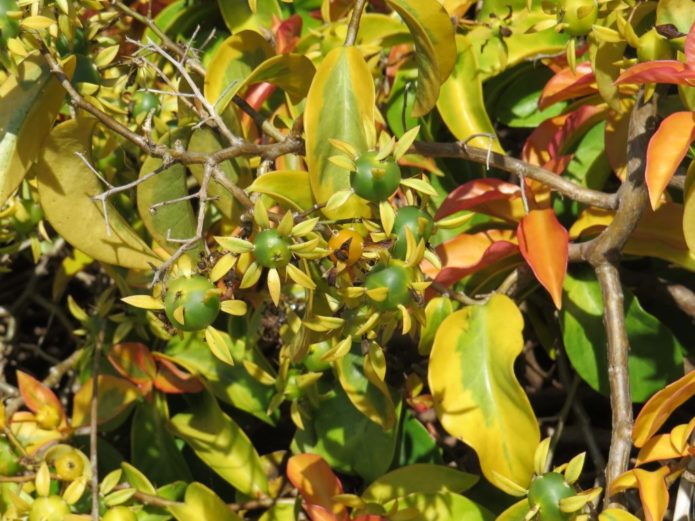
Naturalists warn: it is better not to plant in warm regions in open ground, as over time it can drown out all plantings!
In Mexico, Arizona, Texas, the Caribbean and Falkland Islands, there are about 20 species of this plant. Some representatives grow up to 5-10 meters. The specimens that were brought to Europe immediately conquered gardeners in many countries, so it was decided to grow the plant for decorative purposes. So they appeared in Australia, the Mediterranean countries and in the south of the Crimea.
Who is suitable for breeding
Breeding pereskii is an exciting and completely uncomplicated activity that even a beginner can do. Aesthetes will appreciate its lovely flowers, and practitioners will appreciate the benefits for the body. The plant is not poisonous. Moreover, for medicinal purposes, its leaves, fruits and even bark are eaten. Useful elements in their composition treat nervous disorders and cardiovascular diseases, heal wounds and burns, relieve inflammation and edema. However, it must be borne in mind that the pereskii has long needles, which can hurt a small child or pet.
Popular varieties for home breeding: photo and description
In the wild, pereskia grows strongly, turning into huge bushes. But when grown at home, the plants are neat compact bushes. The most popular varieties are presented below.
Pereskia prickly (sharkate)
Cactus in the form of a liana with a dense stem. Shoots cling to the support with sharp thorns. The flowers are white or pink with a strong citrus aroma.
Orange
A shrub with large leaves that can reach 15 cm in length. The foliage is a rich emerald hue, the flowers are orange or red, spreading a fruity aroma.
Grandiflora (large-flowered)
The plant is a large shrub with bright green leaves. He loves the heat; at temperatures below + 10 ° C, it sheds foliage. Flowers are collected in pink inflorescences.
Godseff
The stem is lignified, the cactus is covered with leaves, the bottom of which is painted in red-purple color. Pereskiy Godseff has no thorns. Shoots grow straight up, flowers are pinkish, smell like lemon.
Principles of maintenance and care at home
Despite its exotic nature, the pereskija is not capricious in character. The cactus tolerates drought and temperature fluctuations well, does not require special care. In addition, in an apartment the tree is stretched to a maximum of one and a half meters, therefore it is very popular with breeders of indoor plants.
Containment Procedures: Table
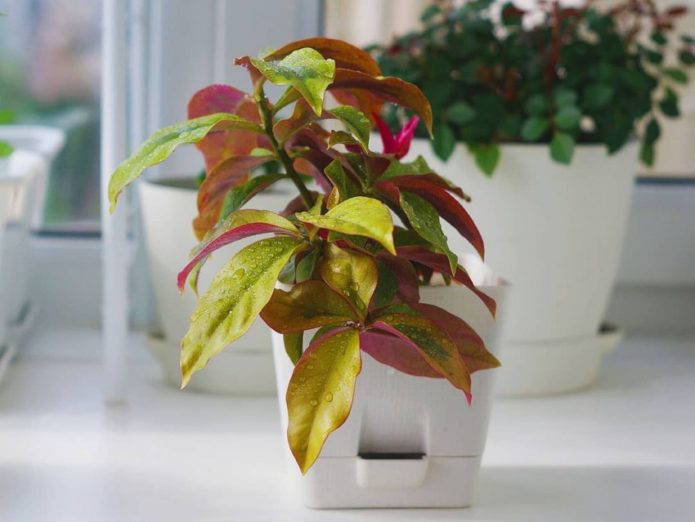
The plant is sick due to the fact that it is poured, so it is better not to spray it again from a spray bottle, wanting to moisten the leaves
In order for the cactus to actively develop and not get sick, it is worth creating comfortable living conditions for it.
| Condition | It should be |
| The soil | A soil mixture of several types of soil is suitable for crossing:
A drainage layer of small stones or chipped bricks is laid on the bottom of the planting tank. Prepared soil is poured onto the drainage, which is covered with a layer of sand on top. The acidity of the soil should not exceed 6 pH |
| Air temperature | In summer, the air temperature should not exceed 27 ° C, in winter - 10-15 ° C. The plant does not like stuffiness, so the room needs to be regularly ventilated. You can place the pot on an open balcony |
| Indoor humidity | The development of a cactus does not depend on air humidity. He feels great even in an apartment where the air is very dry and the batteries work. It should be sprayed only to remove dust and prevent pests. |
| Lighting | Pereskia loves sunlight, but direct rays are dangerous for her. Therefore, in the scorching sun, the leaves should be covered with a net or a translucent curtain. If you put a pot with a plant in a dark place, the stem will stretch out a lot, and the leaves will be small and pale, so the best place for a cactus is a window on the south side. |
Care features
The plant does not require careful maintenance, but there are still several recommendations. It:
- Watering. Pereskia is poured with soft water at room temperature. In summer, the procedure is carried out as the top layer of the soil dries up, in winter - 1-2 times a month. The plant does not like waterlogging, it starts to hurt in constantly damp soil.
- Top dressing. Organic fertilizers are undesirable for cactus; it is better to use special formulations for succulents. Top dressing is applied at the root once a month. During the dormant period (winter), the plant does not need to be fertilized.
- Transfer. The root system of the pereski is highly developed, therefore it quickly fills the pots with itself. It is not recommended to transplant the plant more often than once every 2-3 years unless it is absolutely necessary, but if the roots have already filled the entire container, you need to pick up a larger pot. The procedure is carried out in spring or summer by transferring an earthen coma into a larger pot.
- Pruning. It is necessary to trim branches before active growth begins. This is done in order to create the desired crown shape. The procedure is carried out using sterile scissors or a knife, and the cuttings are placed in water for subsequent rooting.
Flower transplant video
Solving growing problems
In the process of growing pereskia, the florist may encounter certain difficulties. This could be:
- cessation of active growth (reasons - insufficient watering in summer, excess moisture in winter, or too small a container for growing);
- stretching shoots, internodes far from each other (the plant does not have enough light, you need to choose another place);
- pale leaves (excessive lighting, you need to cover the plant pot from the sun);
- the shoot becomes wrinkled at the tip, specks of small rot are visible (stagnation of liquid in the soil).
Important! If the plant is visually healthy, but does not bloom, it should be transplanted into a larger pot, then fertilized and hormonal growth preparations applied at the root. In this case, the chances of flowering will be greater.
Diseases and pests of cactus
An unusual cactus has a fairly strong immune system, so it rarely gets sick. But there are several diseases that the plant is susceptible to:
- Gray rot. It appears due to excess moisture, the only solution is to transplant the plant to another land and water less often.
- Mealybug. The disease is manifested by deformation of young shoots and a spiderweb bloom on the leaves. The parasite is very harmful to the plant, so at the first sign, you should immediately rinse the cactus under warm water, without touching the ground. Then you need to treat it with a soap-alcohol solution, and then conduct a course of spraying with calendula broth. If the case is neglected, the plant is treated with an anti-coccid agent.
- Shield. It affects the upper side of the leaf, which is why yellow spots appear on it. Diseased leaves fall off over time. The pest is removed from the plant with a cotton pad soaked in an alcohol solution. If the lesion is severe, chemical preparations must be used.
The most common cause of disease is too wet soil and root rot. In this case, it is necessary to transplant the plant, having previously treated the roots with charcoal.
Reproduction methods
The unusual cactus reproduces in two ways - with the help of cuttings and seeds. Each has its own characteristics.
Cuttings
Cuttings are broken off from the parent plant. They must be young and have at least one knot. For rooting, they are placed in glasses with damp earth or water (the latter must be changed regularly). If the method with water is chosen, you need to create a semblance of a greenhouse, covering the structure with a film. The temperature under it should be + 25 ... 28 ° С. The roots should appear in 14–20 days. In an apartment, this method is considered the most convenient.
Seeds
Sowing is carried out in the spring in a container with moist soil. Seedlings should be germinated at temperatures up to + 21 ° C and constantly diffused lighting. When the first leaves appear, the sprouts can be planted in separate pots and looked after as if they were mature plants.
The peresky cactus will be the ideal solution for those who want to decorate their apartment with a cute and unpretentious plant. Its lovely flowers will delight family members and guests, and positive energy will protect the house from negativity.
